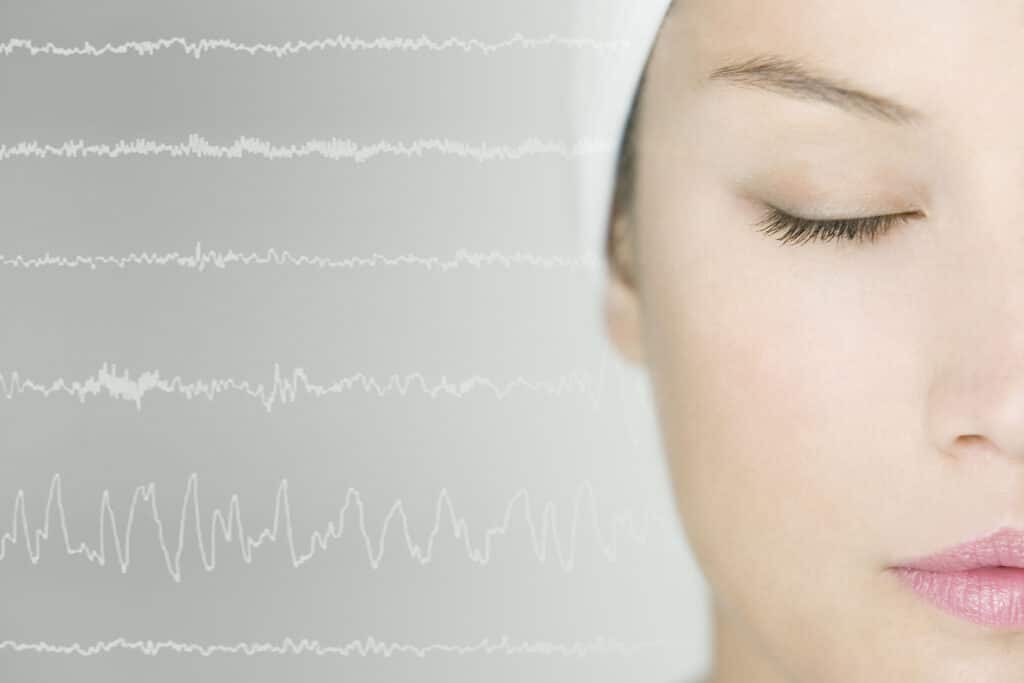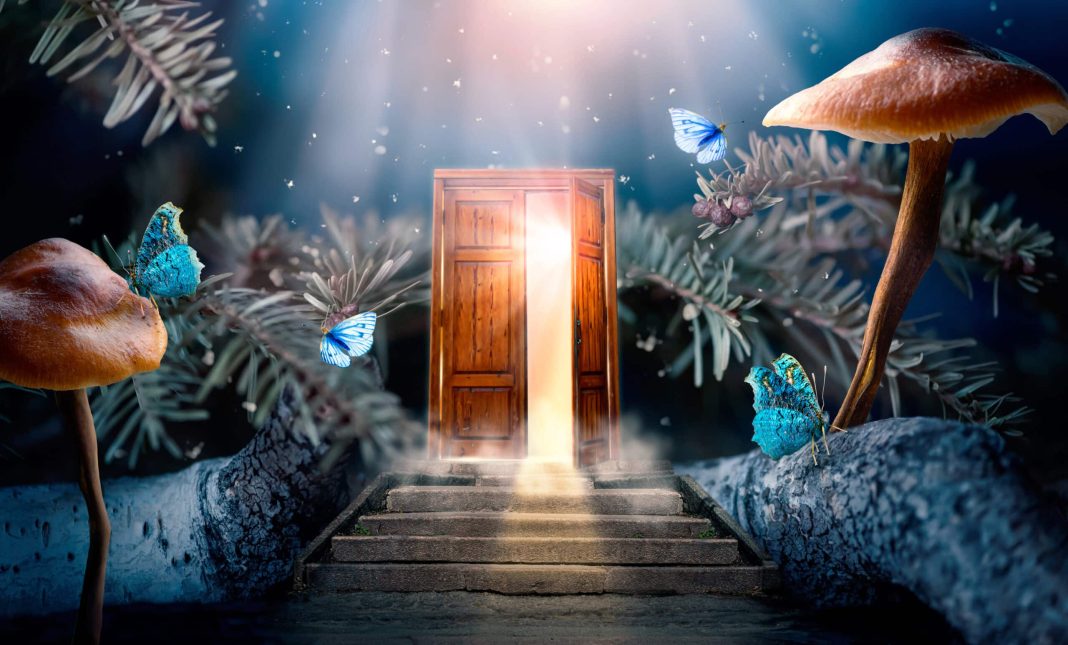Picture the greatest dream you’ve ever had. Flying over clouds? Running around naked in a land made out of candy? Lying on a beach with an unlimited supply of your favorite food? Well, imagine if you couldn’t dream. Whilst many of us will know the feeling of dreams becoming less frequent, the idea of not ever having one is quite extreme.
Well, this is the true story about a woman suffering from a condition that meant she hadn’t been able to dream for 34 years and decided to look for some answers. After taking part in a new study – using psilocybin – she was miraculously able to dream once again. But how is this possible? Are magic mushrooms a cure for aphantasia?
What are Dreams?
Every night, as the world plunges into darkness and slumber takes over, our minds embark on a remarkable journey. This journey is one that transcends the boundaries of reality, unleashing a cascade of images, emotions, and experiences that are both bewildering and captivating. These are dreams, the enigmatic tapestries woven within the realm of our unconscious minds. For centuries, dreams have intrigued, mystified, and inspired humans, prompting us to question what dreams actually are and what purpose they serve. Some call them: the theatre of the mind.
The Theatre of the Mind
Dreams are complex mental experiences that occur during the rapid eye movement (REM) stage of sleep. They manifest as a collection of sensory perceptions, emotions, thoughts, and memories that create vivid, often surreal narratives. While dreams can vary widely in content and intensity, they often defy the laws of physics and logic, weaving scenarios that may seem nonsensical when juxtaposed with our waking reality. The origins of dreams can be traced to the intricate work of brain structures. The brain’s cortex, responsible for cognition and sensory processing, communicates with the limbic system, the emotional centre of the brain, during REM sleep. This interaction leads to the creation of dreamscapes that can evoke intense emotions, sometimes even more potent than those experienced during wakefulness.
Why do we Dream?
Throughout history, numerous theories have emerged to explain the purpose and significance of dreams. Sigmund Freud, the founder of psychoanalysis, believed that dreams were windows into the unconscious mind, providing a means to understand suppressed desires and conflicts. His theory, which emphasised the symbolism and hidden meanings within dreams, laid the foundation for much of the modern understanding of dream analysis.
Be careful when describing one of your dreams to a Freud-lover – they might start creating some elaborate theory about what it all means. For instance, dreaming about losing your teeth is believed to be about grief or loss. Whether you believe in this or not, contemporary research in the field of neuroscience offers a more nuanced perspective.
The activation-synthesis theory, proposed by J. Allan Hobson and Robert McCarley, posits that dreams arise from the brain’s attempt to make sense of random neural activity during REM sleep. In essence, loads of random stuff jiggles about in our brains when we sleep, and our mind tries to create a sensical narrative from it. Another theory, written by NIH, states:
“An intriguing and detailed evolutionary theory of dreams… stipulates that the biological function of dreaming is to simulate threatening events and to rehearse threat avoidance behaviours.”
This is an interesting theory, as it gives dreams a genuine evolutionary purpose. Whereas the others seem to suggest that dreaming is simply a symptom of other things, or simply just a random collection of left over stuff.
Dream Deprivation
Imagine trying to conjure an image in your mind’s eye – a beach at sunset, a loved one’s face, or even a simple geometric shape. For most people, this mental imagery is a natural and intuitive process, as they can effortlessly visualize these images in their mind. However, for individuals with aphantasia, this mental canvas remains blank, devoid of visual images. What is it like to not be able to dream?
Aphantasia
Aphantasia is a cognitive condition characterised by the inability to create vivid mental images or visualise objects, people, or scenes in one’s mind. People with aphantasia lack the ability to generate sensory experiences within their imagination, including both visual and auditory. The term ‘aphantasia’ was coined by neurologist Adam Zeman in 2015, and since then, it has garnered increasing attention within the fields of psychology and neuroscience. The term in Greek literally means: ‘without imagination’. Around 2-5% of the population suffer from this condition, and it tends to be more common in men than women. The woman that we’ll be discussing today recently described her experiences in the Metro:
“If someone tells me “imagine a castle”, I can only imagine a castle that I know, like Hogwarts, and it takes the form of descriptions I have read, not images.”
People suffering from aphantasia find it difficult to remember or plan routes when travelling, and can often get lost. There’s a bit of a spectrum with the condition – with some people having a complete absence of visual imagery, while others might possess a limited capacity to conjure faint, vague, or abstract images. At present, there is very little research into the cure for this condition. However, this year, there may have been an interesting breakthrough using magic mushrooms to cure dream deprivation.
The Dream Study

A recent 2023 study investigated the effects that psilocybin – the psychoactive ingredient in magical mushrooms – would have on a woman who suffered from aphantasia. This woman was unable to see things in her mind’s eye. As much as she tried, she was unable to imagine anything basically. She could not picture it – only think of desriptions. However, after using magic mushrooms, this all changed. She was able to imagine and dream. She said:
‘I found it incredible because it was the first time I had images in my mind, and I realised that you can play with images, zoom in, zoom out, break down colours,’
The dream study proved that her perception of visual images had increased from a minimum to a maximum after taking the psychoactive substance. After this experience, the individual’s ability to to visualise thoughts became less colourful than when she experienced psilocybin, but her imagination and dreams were left at an average state. In a sense, she was cured.
Researchers are still struggling to understand exactly why the magic mushrooms were so effective in helping with her aphantasia, but they assume it’s something to do with the substance’s ability to alter perception. As it stands, this study was done on only one individual, so a lot more needs to be done before any conclusive evidence can be released. However, at present, it looks very promising. Could magic mushrooms really be the cure for people that cannot dream?
Final Thoughts
Magic mushrooms have been used as a recreational substance to awaken the mind and alter perception for centuries. Anyone who has ever used this drug will know the power it has. But in recent years, scientists and academics have started to realise that these magic mushrooms have a bigger potential than just being used for recreational purposes. A CNN article writes:
“Let’s be adults about this. These are no longer ‘shrooms’. These are no longer party drugs for young people… Psilocybin mushrooms are non addictive, life-changing substances.”
When used responsibly, magic mushrooms can help people change their lives. When thinking of a mushroom trip – and all of the magic visual world’s that can arise – it is no surprise that this woman was able to cure her aphantasia. The colors, the sounds, the sensations, the emotions – these would have awoken her mind and perhaps unlocked it too. Drugs like magic mushrooms, LSD and MDMA need to be continued to be explored to see what else these substances can do for people’s various conditions. Like this specific case, the possibilities could be breathtaking. The world of medicine can be greatly benefited by an open approach to the world of recreational substances.
Hello readers. We’re happy to have you with us at Cannadelics.com; a news source here to bring you the best in independent reporting for the growing cannabis and hallucinogen fields. Join us frequently to stay on top of everything, and subscribe to our Cannadelics Weekly Newsletter, for updates straight to your email. Check out some awesome promos for cannabis buds, smoking devices and equipment like vapes, edibles, cannabinoid compounds, amanita mushroom products, and a whole bunch more. Let’s all get stoned together!





